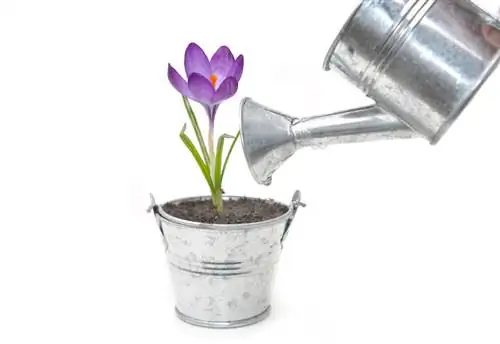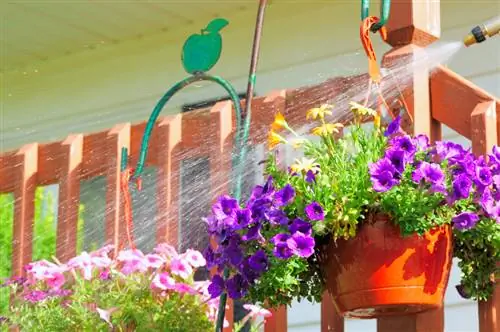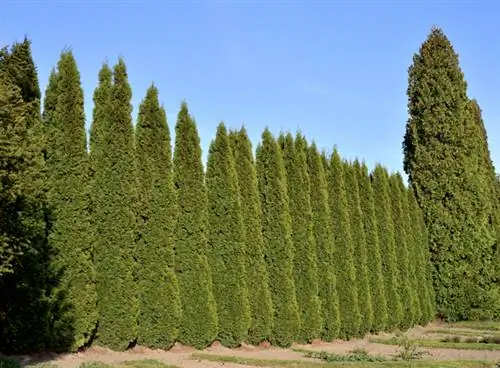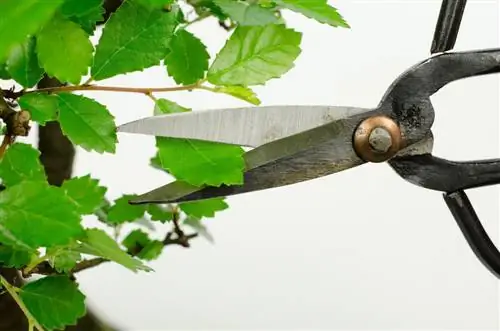- Author admin [email protected].
- Public 2023-12-16 16:46.
- Last modified 2025-01-23 11:21.
Chinese elms are particularly suitable for keeping as bonsai. However, the delicate cultivation form from the Far East requires conscientious care. On the one hand, you have to maintain the shape of the tree, but on the other hand, basic measures such as watering or wintering are of great importance. Below you will find out what is important when caring for a Chinese elm.
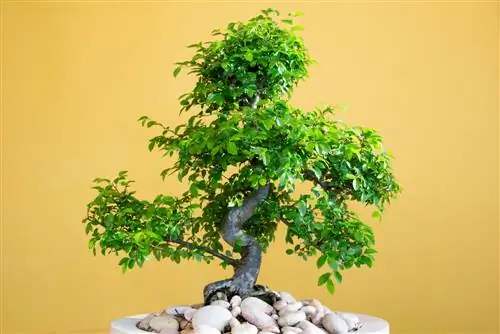
How do you care for a Chinese elm as a bonsai?
The Chinese elm as a bonsai requires regular wiring, watering without waterlogging, fertilizing from spring to autumn, a sunny location in summer and cool temperatures in winter. Repotting is necessary every two years for young plants and every 3-5 years for older ones.
Different forms of posture
The Chinese elm is suitable for both indoor bonsai and cold house bonsai. Fortunately, the deciduous tree is very easy to care for. It also offers you numerous design options, such as
- the broom shape
- the free upright form
- or the rock shape
Wiring
To create such a look, you will need to wire your Chinese elm. As soon as the young shoots are around 10 cm long, cut them back to 1-2 leaves. Later, all that is left to do is the usual, regular pruning. You can wire small branches with conventional bonsai wire (€6.00 at Amazon). So that thicker branches don't "eat" into the wood, you should just tighten them.
Pouring
Keep the substrate moist at all times, but definitely avoid waterlogging. Not too wet and not too dry - these are the optimal conditions for a Chinese elm.
Fertilize
Fertilize the tree only in the warm season from spring to autumn. Here you have the choice between
- organic solid fertilizer (every 2-3 months)
- conventional bonsai liquid fertilizer
Location
In summer, a very sunny outdoor location is recommended. In winter temperatures of 10-15°C are optimal. Light frost does not harm the deciduous tree. If you want to be on the safe side, bring your Chinese elm indoors. Make sure there is sufficient light supply.
Regular repotting
Chinese elms are characterized by strong root formation. Regular repotting is therefore part of the care of the deciduous tree. The following applies:
- repot young plants every two years
- Repot older plants every 3-5 years
Before you put the tree in a new pot, you should cut the roots. It is best to use concave pliers or bonsai scissors for this. You should avoid blunt tools that crush the roots.


